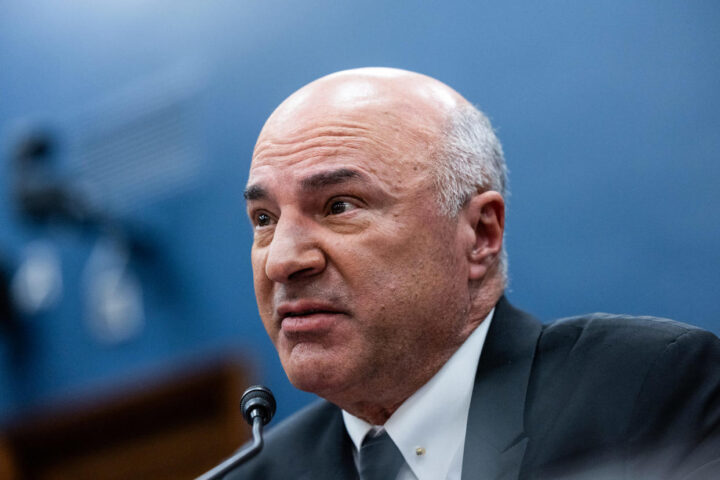2023 was an eventful year in the U.S. financial markets, to say the least.
Given this, I imagine you may have some questions about what’s to come in 2024, so I thought I would reach out with a helpful overview of last year and an outlook for the year ahead.
U.S. Equities
Strength, resilience, and logic-defying are words that come to mind for equities in 2023. March and October of 2023 had bears on the offensive, courtesy of regional bank concerns and high interest rates, respectively.
But fast forward to the end of the year, and the S&P 500 had a 2023 return of 24.23%, the Nasdaq 100 rose by an astounding 53.81%, and the Dow Jones Industrial Average rose by 13.70%.
Likely to be a headline theme heading into 2024, there is a lot of cash on the sidelines (i.e., uninvested cash). How much is a lot? Around a record $6 trillion, according to some measures compiled by Fundstrat. That figure is more than the sum of all non-housing debt (~$4.8 trillion) held by all Americans.
This cash could help to provide equity market support in 2024 if it is invested into stocks this year.
Other Asset Classes
- Bonds: There’s been some tough sledding in this area as investors have endured a three-year bear market with the benchmark 10-year Treasury yield trading in a wide range between 3.253% to approximately 5.0% throughout the year. Bond buyers were likely feeling better once interest rates moved lower toward the end of 2023.
- Gold: GLD (SPDR Gold Trust ETF) had a resilient and impressive year, rising 12.69% in 2023, even as interest rates rose for the majority of the year. Spot gold prices breached all-time highs in early December 2023 and pulled back to end the year. Precious metals could garner more attention this year, with interest rates expected to stay steady to lower.
- Megacap Crypto: Bitcoin, the largest cryptocurrency by market cap, had a stellar 2023, increasing by approximately 154%. Investors were eagerly awaiting a spot Bitcoin ETF (approved Jan ‘24), and bulls are cheering its prospects as the path forward is in the SEC’s hands. Bitcoin bulls are also cheering the prospects of the Bitcoin “halving”’ event, which is slated to occur in Q1-Q2 in 2024. Halving is when the mining reward is cut in half, therefore creating less additional supply.
Inflation
Commodity Prices: Broadly measuring commodity prices using the S&P Goldman Sachs Commodity Index, we see that the index fell in 2023, indicating lower wholesale prices across a broad range of commodities. Ideally, this trickles down to the consumer if those corporations do not mark things up too much.
Consumer Price Index (CPI): Government data shows that consumer inflation, as measured by the Consumer Price Index, peaked year-over-year in June of 2022 at 9.1% and declined steadily throughout 2023. However, it may not feel like it when you purchase goods and services. “Stuff” is still expensive, with service pricing and shelter pricing remaining stubborn. Core CPI (which excludes volatile food and energy) showed a rise of 4% year-over-year, according to the last release in 2023 of November data.
Core Personal Consumption Expenditures (PCE): The Fed’s most recent forecast shows its favorite inflation gauge, Core PCE, falling to 2.4% in 2024, 2.2% in 2025 — and ultimately reaching their target of 2% in 2026.
The Consumer Heading Into 2024
Resilient used to be the word, but now logic-defiant sounds more accurate. How has the U.S. consumer remained so healthy with everything they have battled against? It is amazing!
Consumer Confidence: Consumer confidence increased in unison with the direction of the stock market rally in November and December, indicating higher levels of consumer optimism. The final reading in 2023 showed consumer confidence at a five-month high.
Consumer Debt: While consumer confidence is trending higher, so is consumer debt. Consulting the Federal Reserve Bank of New York, we see a rising uptrend as of the last data release for Q3 2023, with non-housing debt at $4.8 trillion. Of this amount, total consumer credit card debt has surpassed 1 trillion. With elevated credit card interest rates, it is no picnic for indebted borrowers. Yet, consumers keep spending, and the trend has been spending on experiences versus material goods.
Prospects for lower interest rates in 2024 could help to fuel this narrative and embolden the already willing and able U.S. consumer.
Retail Sales: Monthly retail sales results have exceeded estimates from August through December, further fueling the resilient consumer theme.
We can see a mostly steady uptrend of retail sales throughout 2023. Let’s keep in mind that retail sales figures are not inflation-adjusted, so depending on who you ask, the indicated strength is debatable.
The post-Covid consumer spending has been impressive. However, early data available for the holiday shopping season did show some evidence of a slowdown, with the holiday shopping season data coming in at a 3.1% year-over-year gain versus the 3.7% expected.
There has to be a breaking point in consumer spending at some point, right? Well, many thought this over the last couple of years, and they have been proven wrong. We will see what 2024 brings.
Labor Market
Some would call 2023’s labor market the best on record — with good reason. Low unemployment and narrowing wage inequality, among other factors, have contributed to the positivity.
Jobs growth was white-hot through the middle of 2023 before cooling somewhat. The cooling has been viewed as constructive and even goldilocks-like when considering the November and October jobs data.
Looking ahead, economists offer varying perspectives on 2024’s labor market, with the consensus calling for stability in job growth. Further cooling in inflation as well as a calmer and more accommodating Fed play into this expectation.
Of course, there are two sides to every coin, and other analysts have other opinions.
Energy
After markets saw rising crude oil in the first half of the year, the narrative shifted directions, with crude oil and gasoline prices falling in the final two months of 2023. In fact, Crude Oil (West Texas Intermediate) finished 2023 more than 10% lower than where it began the year. Lower gas prices at the pump for most of America certainly is helpful.
Heading into 2024, reports of electric vehicle (EV) sales slowing down are in the headlines. Longer days on the lot until sales and growing inventories are the themes for now, and manufacturers have begun to cut back on production. Talk of renewable energy supply chain bottlenecks is also in the news.
It’s also an election year, and that may have some influence on pump prices. “There’s a really strong inverse relationship between pump prices and approval ratings at a presidential level, and it hasn’t changed in four decades,” Clearview Energy Partners Managing Director Kevin Book said.
Election Year
On the note of the presidential election, associated volatility could find its way into markets. According to U.S. News, the S&P 500 has yielded an average of a 7% return in election years dating back to 1952.
The election cycle could add more headlines to a market already massively driven by headlines, with investors weighing the economic policy of the potential presidential winners.
Federal Reserve Outlook
As major U.S. market indexes rose impressively in November and December, so did expectations for Federal Reserve (Fed) rate cuts. High hopes surrounded Fed rate cuts, but there was some disparity between the Fed’s commentary and the market’s pricing at year’s end.
At the end of 2023, market expectations were for cuts to begin in March of 2024, with a total of six to seven quarter-point rate cuts priced in, according to the CME FedWatch Tool (CME FedWatch Tool, 2023). Yet, the Fed has broadcasted a message of three cuts in 2024.
In fact, while Fed members see rate cuts as likely in 2024, the path remains highly uncertain, according to the December meeting minutes released on January 3rd.
Fed officials were optimistic about the path of inflation in the meeting minutes, but market bulls who expected a super-dovish-sounding Fed ready to cut rates quickly and rapidly were left somewhat disappointed.
Perhaps we have indeed seen a market that has gotten a bit ahead of itself on rate-cut hopes. On the day of the Fed meeting minutes release, markets were still pricing in the first rate cut of 2024 to occur in March to the tune of a 64.65% of rates between 500-525.
Long-Term Effects
As always, we will keep you apprised of what we know when we know it, with a focus on how what happens in the news and in the markets impacts your investments.
However, I do encourage you as a long-term investor to keep in mind the markets of March 2020, and more recently, March and October 2023, when world events led to dips. Selling assets in a panic during Covid days, regional bank pressures, or times of rapidly rising interest rates has proven to be the wrong choice time and time again.
Remember, in its 66-year history, the S&P 500 has delivered positive annual gains roughly 70% of the time. That’s not to say that the bumps in the road don’t deliver brutal news headlines and trigger emotions — but historically, remaining level-headed and disciplined puts the odds in an investor’s favor.
And as the famous Winston Churchill quote warns: “Those who fail to learn from history are condemned to repeat it.”
About John Mateyko
John Mateyko is a highly experienced financial advisor with a 24 year work history in the industry. He is the Managing Partner of IDEX Financial, a firm that he established in 2010. John specializes in helping clients develop retirement income plans that aim to effectively meet their financial objectives.
After completing his business studies at Augustana College, John embarked on a successful career, holding prominent positions at renowned firms such as Morgan Stanley, Atlas Securities, US Bank, and JP Morgan Chase. Throughout his professional journey, John has consistently been recognized for his exceptional skills in portfolio management.

Committed to delivering exceptional service, John holds several prestigious certifications, including Fiduciary Financial Planner, Wealth Management Certified Professional (WMCP), Retirement Income Certified Professional (RICP), and Accredited Portfolio Management Advisor (APMA). He is currently pursuing the Certified Investment Management Analyst (CIMA) certification from the esteemed Yale School of Management, demonstrating his dedication to professional development.
About IDEX Financial
IDEX Financial was established as a boutique investment firm in Chicago in 2010 and has since expanded its operations to the Atlanta, Georgia market in 2018. In 2020, the firm established its headquarters in Serenbe, Georgia. At IDEX, John’s primary focus is guiding clients through the complexities of retirement planning. Acknowledging the unique financial circumstances of each client, he develops personalized strategies that aim to align with their individual needs. John’s aim is to provide precise advice and foster a sense of security with the goal to empower his clients to make informed decisions about their financial futures.
Beyond his professional endeavors, John Mateyko places significant importance on his family and community. He and his family actively engage in community enrichment activities in Serenbe, a serene town in rural Georgia known for its well-being initiatives, strong sense of community, and appreciation for nature.
In conclusion, John Mateyko’s extensive expertise, commitment to continuous learning, and client-centered approach demonstrates his dedication to enhancing the lives of his clients and the community he considers home.








